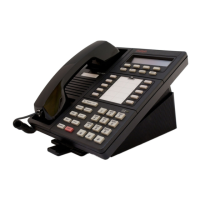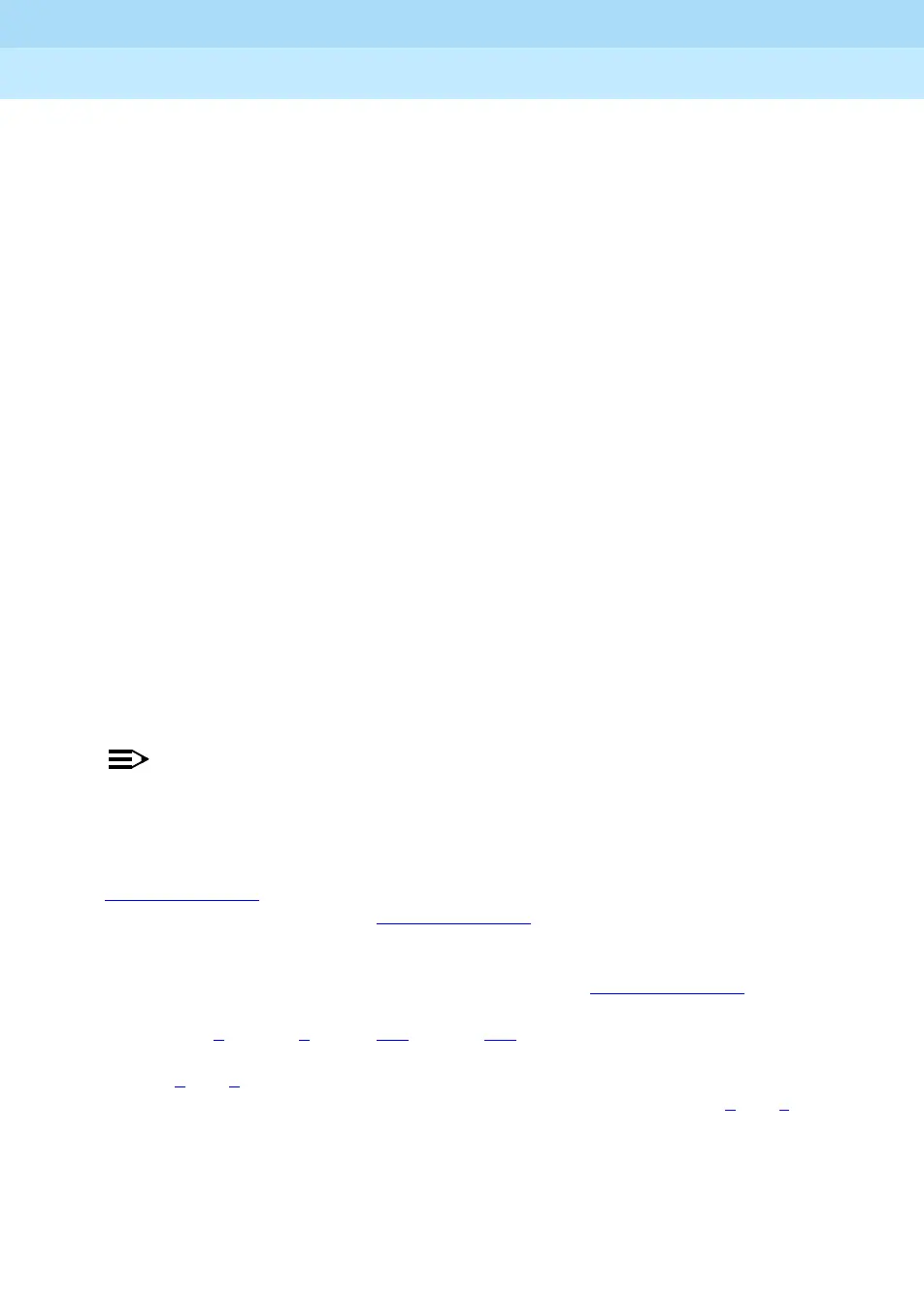MERLIN LEGEND Communications System Release 6.1
Feature Reference
555-661-110
Issue 1
August 1998
Features
Page 164Coverage
■ The sender’s telephone is forced idle for system programming or
centralized telephone programming.
■ The sender’s telephone is not responding (for example, not connected).
■ The sender has activated Remote Call Forwarding.
A receiver is considered unavailable (his or her telephone does not ring) under the
following conditions:
■ The receiver has turned on Do Not Disturb. (In this case, the sender can
call the receiver.)
■ Another call is ringing or answered on the receiver’s Cover button for that
sender.
■ The receiver is in extension programming or is testing the telephone.
■ The receiver with an MLX display telephone is using the Alarm Clock or
Directory feature.
■ The receiver’s telephone is forced idle for system programming or
centralized telephone programming.
■ The receiver’s telephone is not responding (for example, not connected).
If a call is sent to Group Coverage and no receiver is available, the system
continues trying to send the call every five seconds until a Group Coverage
receiver becomes available. This repeated attempt to send the call is called
retry
timing
. The 5-second retry timing interval cannot be changed.
NOTE:
In Release 6.0 and later systems (Hybrid/PBX mode only), calls arriving at
one system cannot be covered by extensions or calling groups on a remote
system.
Table 9, page 166
shows when a call goes to Group Coverage receivers in
Release 4.1 and later systems. Table 8, page 165
shows when a call goes to
Group Coverage receivers in Release 4.0 and prior systems. In both tables, the
rules for sending calls to Group Coverage apply
after
the calls first go to any
available Individual Coverage receivers (as described in Table 6, page 158
).
See Figures 7
through 8, pages 168 through 169, for examples of LED and ringing
patterns in Release 4.1 and later systems and in Release 4.0 and prior systems.
Figures 7
and 6 show examples of what happens when only Group Coverage is
used or when all Individual Coverage receivers are unavailable. Figures 9
and 8
show examples of what happens when both Individual Coverage (Primary and
Secondary) and Group Coverage are programmed for an individual sender.

